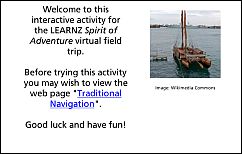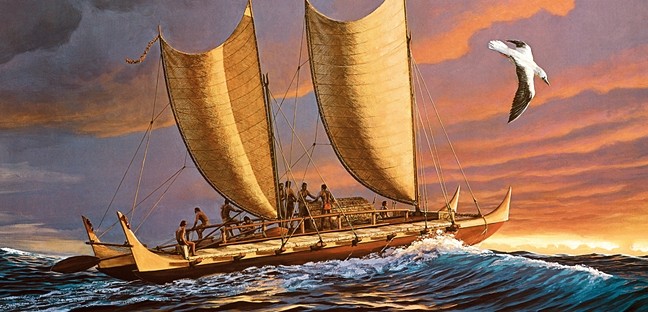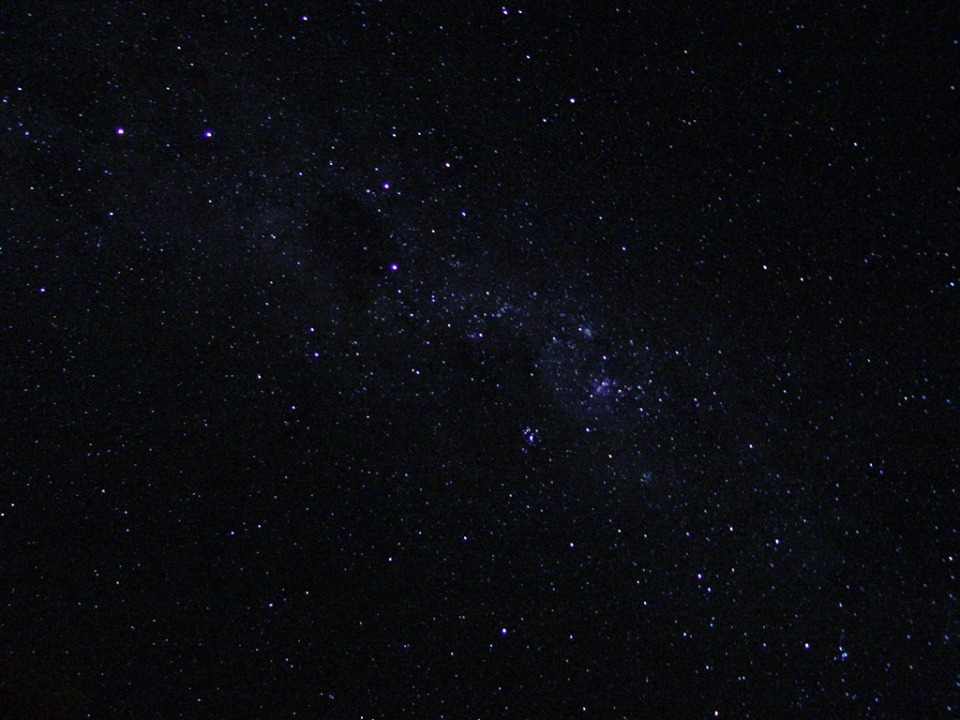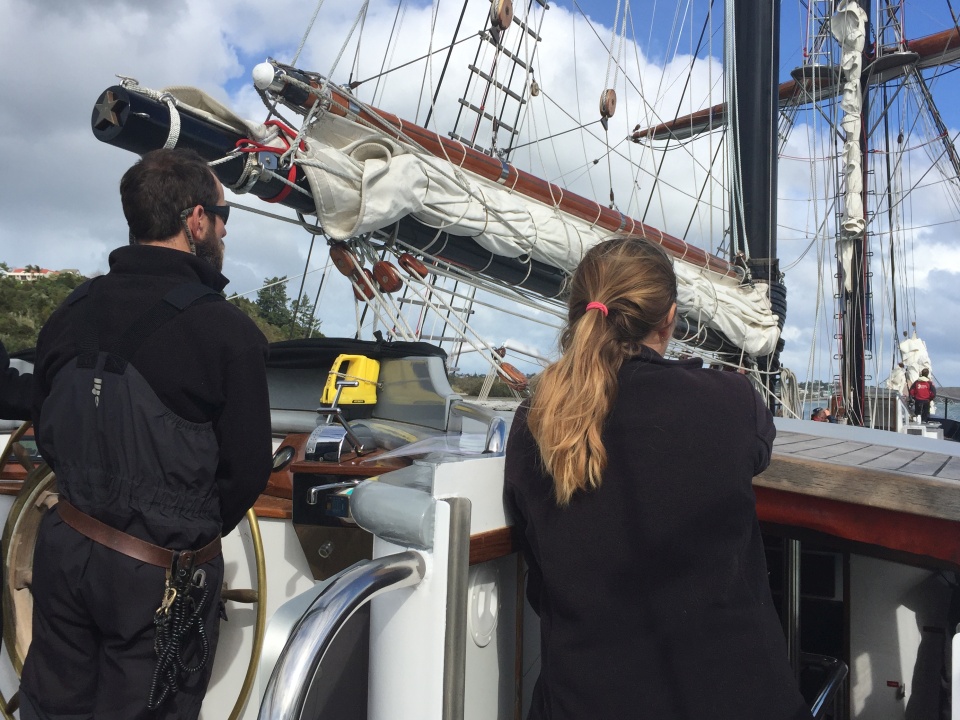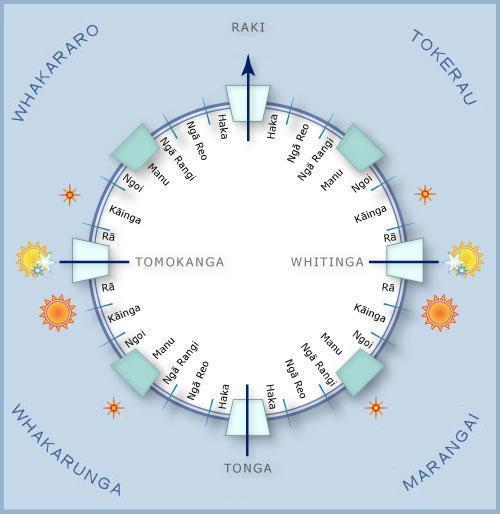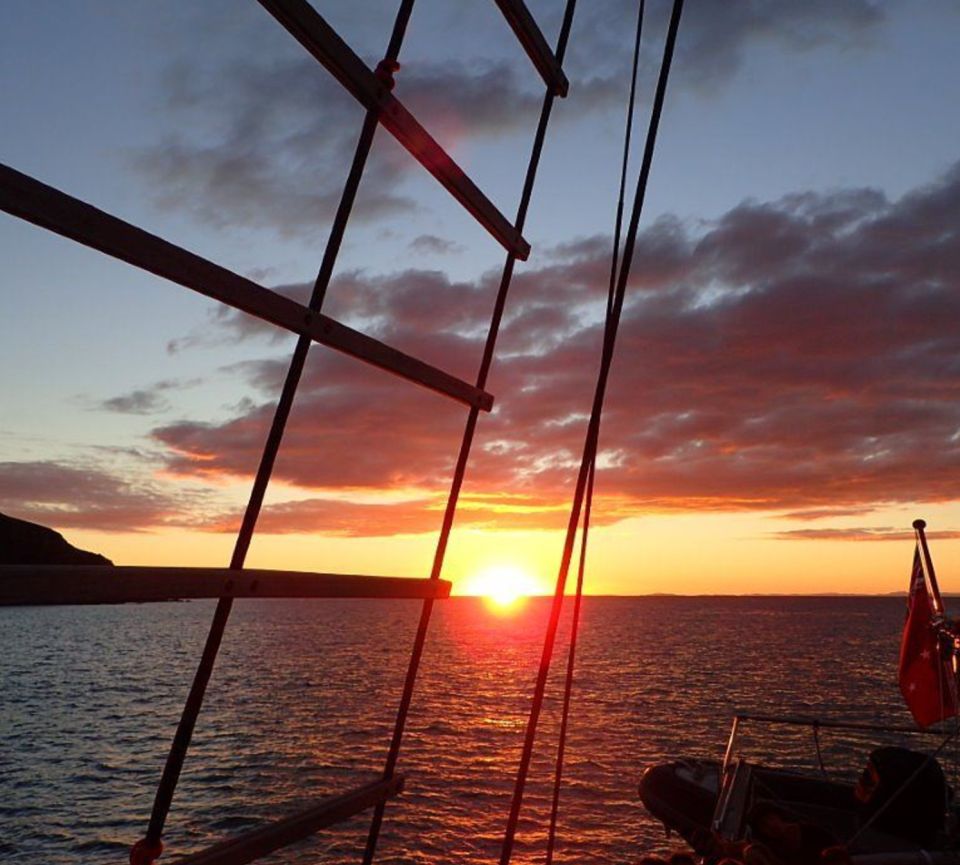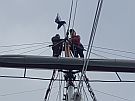Polynesians navigated their ocean voyages without instruments. They found their way using clues from:
- the stars, sun and moon
- patterns in the ocean, including currents and ocean swells
- clouds
- wind direction
- wildlife.
Navigators also kept a mental log of how far they had gone and where they were.
Downwind sailing
Most traditional navigators plan their routes using downwind sailing. This is when you set a course to a point that is upwind of the target island. Then, when you reach that point, you turn and let the wind carry you to your destination.
Winds and currents
Traditional navigators need very good knowledge of wind patterns and ocean currents. Used well, a strong wind or current can help carry you to your destination. A good navigator thinks carefully about the likely winds and currents at the time of a voyage.
More about winds, currents and latitudes here: http://www.exploratorium.edu/neverlost/#/navigation/basics/plan/winds
The star compass
Traditional Polynesian navigators position themselves mainly by the stars. They use what is called a star compass. The ability to read the night sky is a great skill. A star compass is used to help memorise the rising and setting points of the brightest stars and planets to set direction.
Read more on the Te Aurere star compass: http://teaurere.org.nz/star_compass.htm | http://teaurere.org.nz/star_positions.htm
Sun and moon
The sun and moon can help when it is too cloudy to see any stars. The moon may still be seen and is a good bearing marker when it is near the horizon. Navigators can also use the rising and setting sun.
Ocean swells
Ocean swells can be used as a rough guide to direction when the sun, moon, planets or stars cannot be seen at all. A good navigator can sense the direction swells are coming from as they pass under the waka. If you note where the swells are coming from at a time when the stars can be seen, those same swells can guide you when the stars disappear.
When all else fails, and there's no way to keep a correct bearing, a good navigator 'heaves to'; that is, takes down the sail and waits until he or she can set the course again.
Nearing land
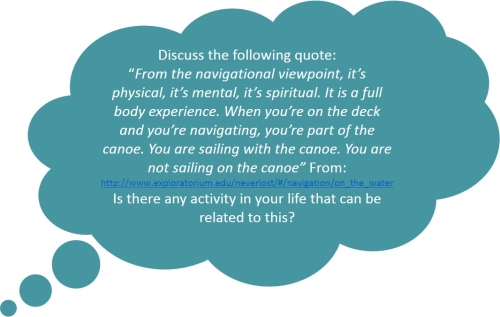 Traditional navigators use a range of signs that show they are close to land, such as:
Traditional navigators use a range of signs that show they are close to land, such as:
- clouds hanging over high islands
- reflections of lagoons in the sky
- plants washed out into the ocean
- wave patterns (swells ‘bouncing’ off islands changes wave patterns)
- birds coming out to fish during the day and then returning to their home island.
Modern Navigation
Modern navigation uses tools such as GPS, radar and digital charts but having some idea of old methods of navigation can still be helpful.

